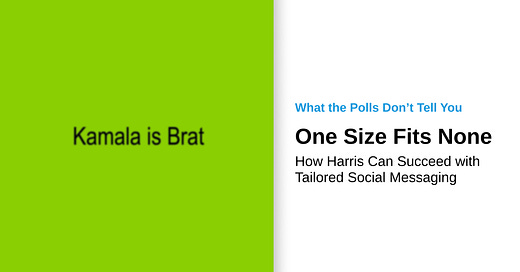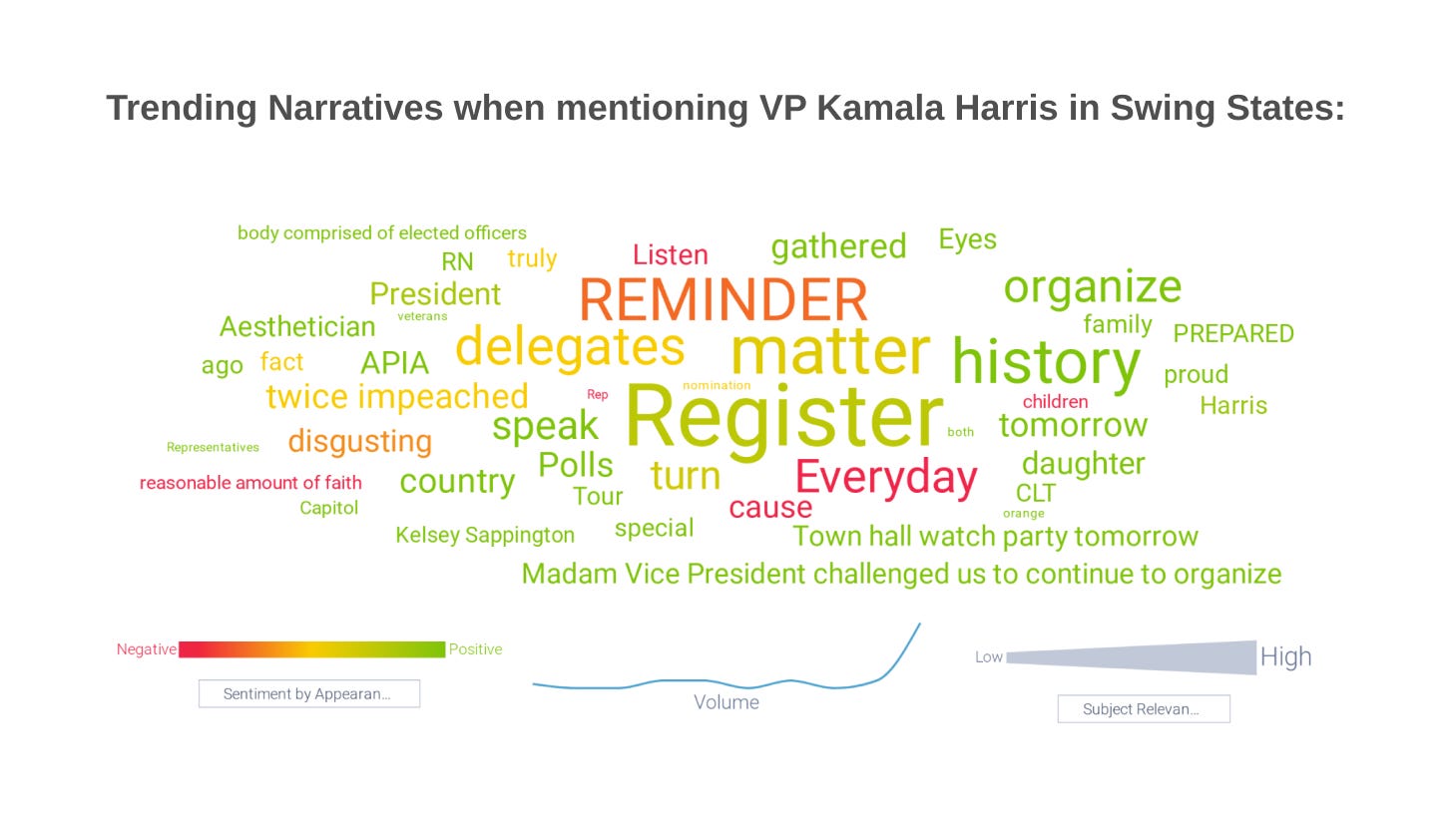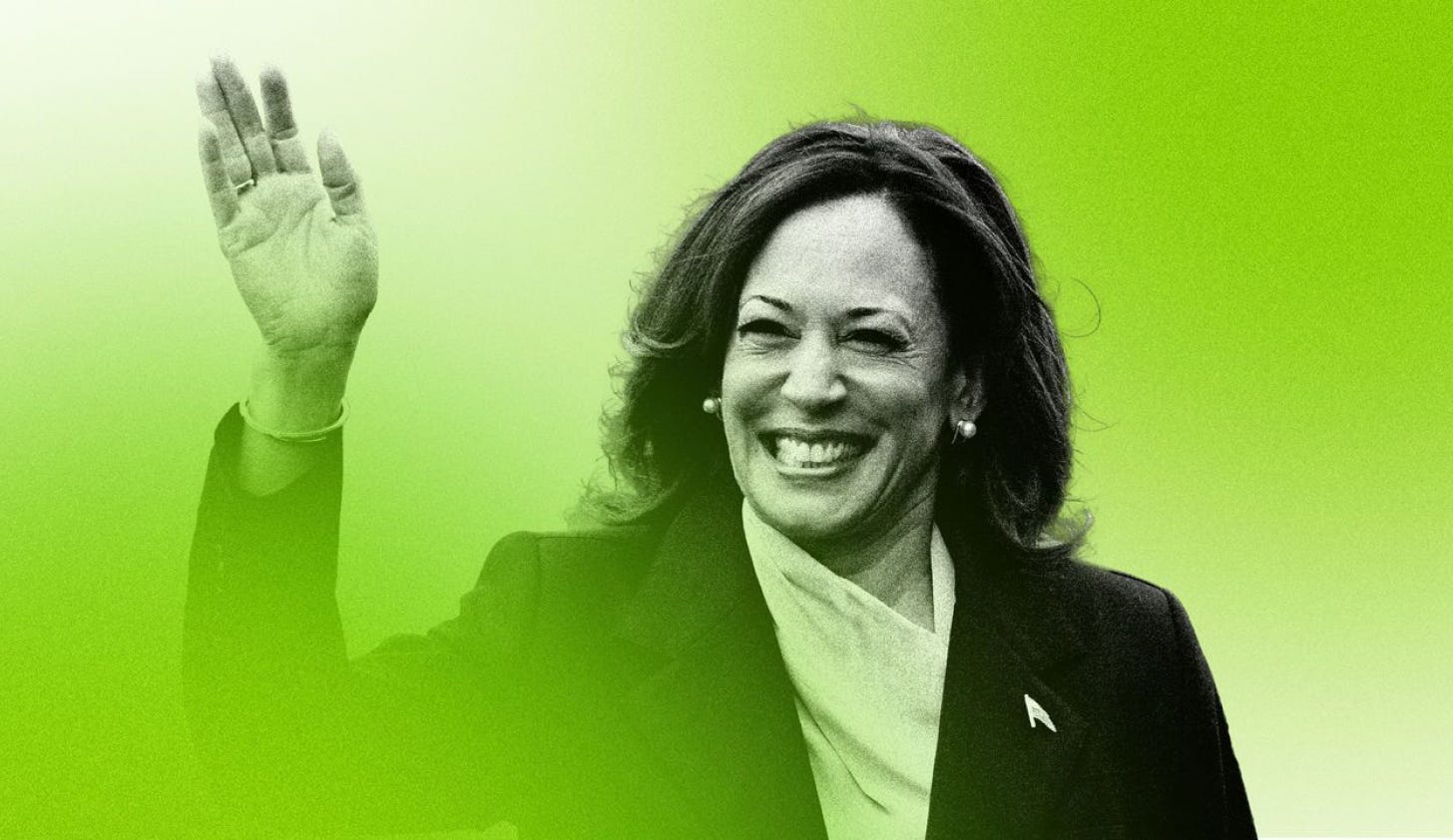Kamala, Mamala, Madame Vice President, coconut tree - however you know her, Kamala Harris is suddenly everywhere.
On July 21st, President Joe Biden suspended his run for a second term and endorsed VP Kamala Harris for the job. Mentions of the current Vice President immediately exploded across the internet, reaching a high of 8.95 million posts in a single day. Over the ensuing week, mentions have ebbed slightly, but content volume remains historically high, with 300% more mentions of the Vice President’s name than before Biden’s historic endorsement.
Reactions have run the gamut from surprise, excitement, and joy to anger and disappointment when Trump is brought into the discussion. It’s interesting to note that while nearly 70% of these mentions skew positive, the style of the posts reflect, target, and effectively engage vastly differing demographics. With content appealing to Gen-Z on one extreme and to more seasoned, undecided voters in swing states on the other.
So how can VP Harris keep up her momentum when everyone’s interests, priorities, and engagement styles are so different?
Let’s dig into this by first looking at this election’s hot button issues and examining how people are talking about them in relation to the Harris platform.
Across most demographics, democratic and undecided voters who are discussing VP Harris are most enthusiastic about her commitment to three big issues: combating Trumpism generally, staving off the ultra-right wing Project 2025 agenda specifically, and championing the rights of women and the LGBTQ+ community.
Even those who have some qualms about VP Harris’ history as a prosecutor or her relationship to border control feel strongly that allowances must be made for VP Harris as a genuinely well-meaning, empathetic, energetic, and pro-democracy leader. Or because, at the very least, she isn’t Donald Trump.
In order to keep VP Harris’ championing of these issues front and center, she must continue to embrace the ethos that one size fits none. Gen Z, Millennials, older voters, undecided voters, parents, and everyone in between are all looking to be engaged with content appealing to their own interests.
VP Harris’ explosion onto the scene was most notably propelled by the pop music star Charlie XCX’s affirmation that “kamala IS brat,” an allusion to her summer anthem of the same name.
This singular tweet from Gen-Z’s reigning pop icon sent her fanbase scrambling to follow, exploding the internet with lime green tinted Kamala memes, echoing the coloring and design of the singer’s album.
Policy-wise, Gen Z is particularly riled up by the dangers of Project 2025, with a commitment to combating threats against women’s rights, gender affirming care, and the environment; but the key to reaching this historically disengaged audience continues to be ensconcing the message in the language and style of pop culture - something VP Harris should continue to pursue and embrace.
In swing states, VP Harris’ most effective and resonant messaging seems to be tied to conversations around protecting young people (especially their own children) and ensuring the longevity of democracy for future generations.
Swing state parents and grandparents are regularly amplifying straightforward content that promotes the freedoms and autonomies of their children and draws comparison with Trump’s disdain for those same protections.
And this messaging is ultimately driving parents to remind others about voter registration.
The bottom line is VP Harris had a fantastic launch, but to land in the White House, she will need to keep the momentum going - and there’s no one size fits all way to achieve that goal. While policy preoccupations are fairly consistent across democratic and even many undecided voters, each is inspired by different styles of messaging.
The power of tailored engagement can be the power of VP Harris. If she continues to embrace it, come November we might find the White House to be tinged just a little more lime green.
Enjoying What the Polls Don’t Tell Us? Check out: If Brands Put People First.
“If Brands Put People First,” is a monthly newsletter where we examine campaigns, advertisements, and commercials from brands that we think could make a major impact if they used real people, with real stories, to achieve real results.
Interested? Check it out here.
Still can’t get enough of us? Check out our Case Studies!











